How To Find Solution Manuals For Textbooks
Podcast: Download
Subscribe: Apple Podcasts | Google Podcasts | Stitcher | RSS
Podcast recording updated 04/01/22
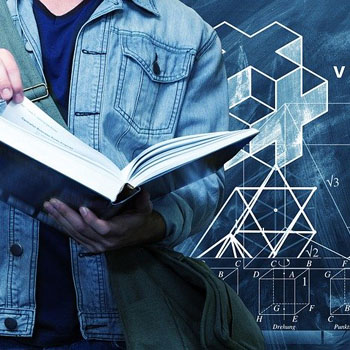 Picture this:
Picture this:
Exams loom on the horizon and you're staring at a stack of unread textbooks so large it would make whatever sane student shake in their boots.
Maybe yous got behind in your reading over the course of the semester…
Or peradventure your professor assigned additional reading yous oasis't gotten around to withal…
Whatever the instance, you have a ton of information to memorize before your exams roll around, and you're feeling the force per unit area.
Well, guess what?
You are non alone! In fact, almost every student ends upwards feeling like this equally the end of the semester approaches. And hardly a calendar week goes by that I'm not asked virtually how to memorize a textbook and textbook memorization.
The good news is: memorizing a textbook is not every bit difficult as it may seem.
At the stop of the day, it's not just about memorizing — that would be an utter waste of time!
Instead, the existent goal is to understand the books you read. And more than only agreement the content, you want to use the textbooks you place in retention to create new knowledge .
In this post, you'll learn how to:
- Correctly set your expectations of what the book volition contain
- Empathize why you demand to read the volume (or if you lot actually need to!)
- Quickly determine how much of the book you really demand to read
- Make a dedicated Memory Palace organisation to memorize the parts you really need
- Learn how to accept notes from a textbook onto index cards or flashcards, and
- Determine how much time you'll demand to practice the information you've memorized
>>> Yours Free: A Private Course With Cheat Sheets For Condign A Memory Main, Starting From Scratch.
If you want to leap to a particular section, y'all tin do that here:
How to Memorize a Textbook vs a Book
Do Y'all Really Demand to Memorize a Book Verbatim?
Ready Yourself Up For Success
How to Memorize a Textbook (Realistically)
- Examine the book
- Make an equation
- Get index cards
- Find the big points and jot them down
- Brand use of your Memory Palace
- Create crazy imagery to help you lot retrieve the info
- Stick each crazy image onto a Memory Palace station for recall
- Test yourself before the teacher does
- Allow the info grow into cognition
- Bonus! Salvage your knowledge for later
Example: How to Memorize Verbatim
Bonus Case: How to Memorize a Formula
How to Report a Textbook for Maximum Retention
Want this post in infographic form?
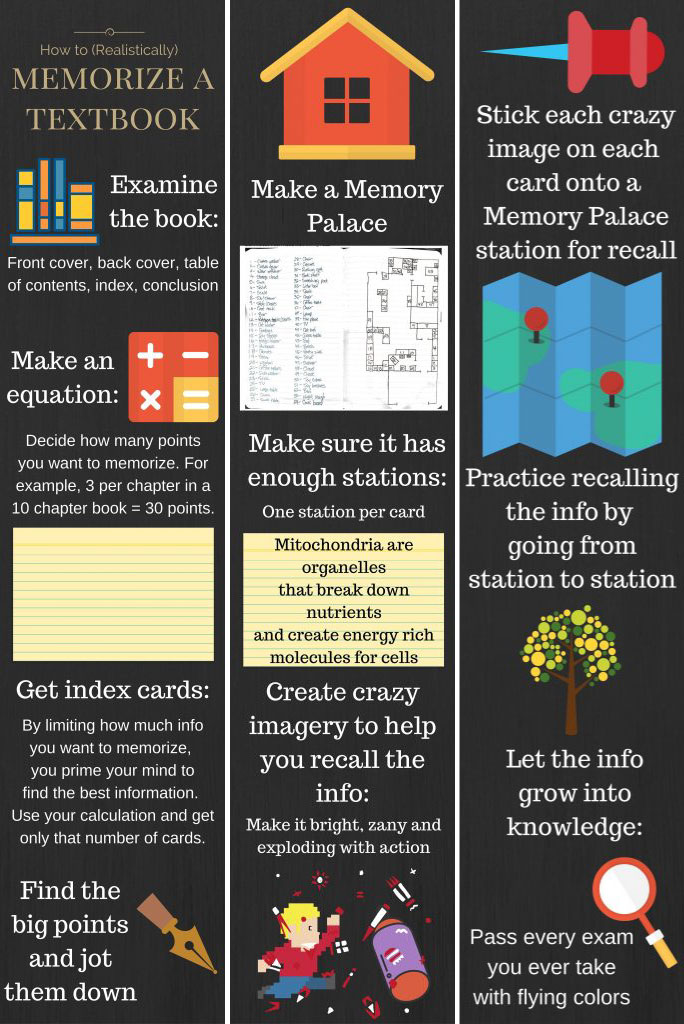
Y'all tin can download this infographic, just like Aldolfo:
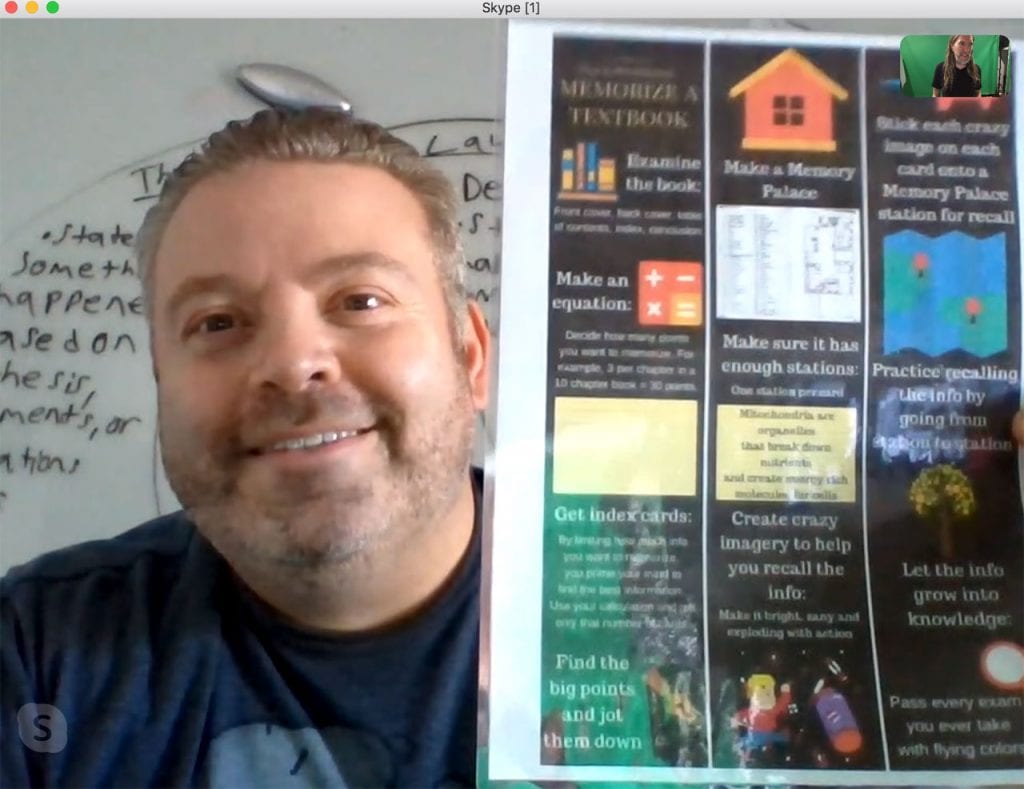
Aldolfo Artigas printed AND laminated this "How to Memorize a Textbook" infographic and now his sons are using the technique too!
So are you ready to learn how to memorize a textbook , the right style?
Let's get started.
The Question That Inspired This Post
And then you may be wondering: Hey Anthony, if people have been asking you about this topic for so long, what finally made you decide to write about it?
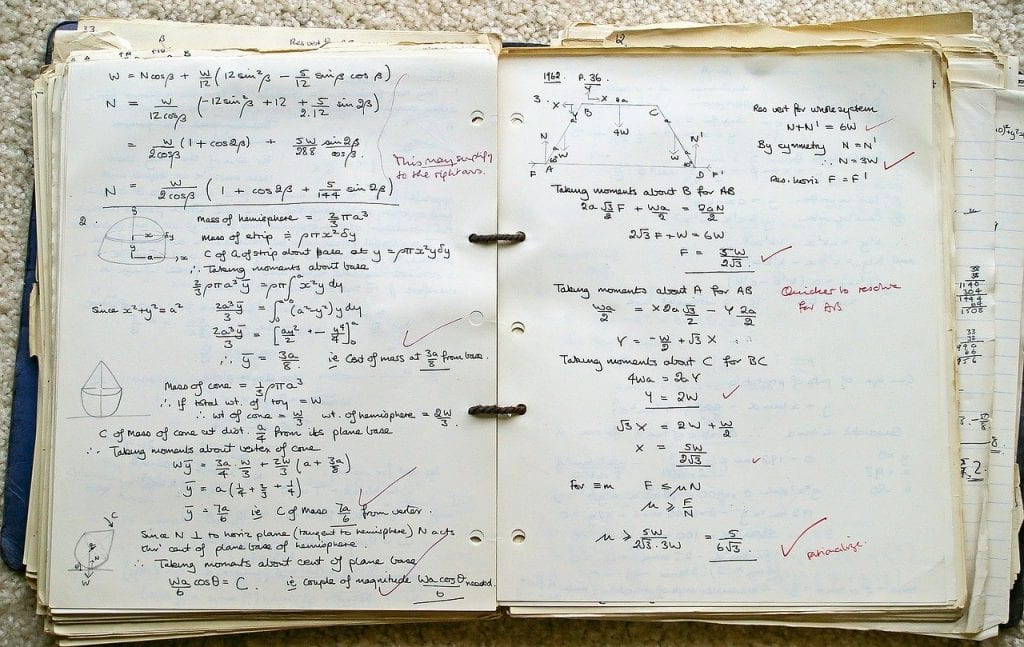
Well, the truth is, I've written nigh textbook (and book) memorization before, just never in the context of memorizing an entire textbook.
You lot can cheque out my mail most how to memorize a chapter out of a textbook . And yous might as well be interested in another post I wrote, about how students with dyslexia can still ace their exams .
In the end, the reason is unproblematic: I decided to write this postal service and record a podcast to assist out one of my audience members.
Here's what this struggling educatee wrote:
"Hi Anthony. I want to memorize some physics, chemistry, and math formulas, and also some texts that I have to memorize verbatim, but it needs a lot of Memory Palaces and also much time. Plus, I don't know how to memorize formulas.
For example, memorizing sin(A+B)=AcosB+cos .
Practice I demand merely one Loci, and how practise I memorize this? Of course, this is a very simple formula, just exams are coming! I need your aid."
Now that nosotros know why this student needs help, permit's quickly talk nigh the differences betwixt a textbook and other kinds of books.
How to Memorize a Textbook vs a Book
For the purposes of this postal service, we'll employ the words "volume" and "textbook" interchangeably.
When it comes right downwards to information technology, the merely real divergence is that someone has called a textbook a textbook. Other than that, they're remarkably similar — pages stuck between ii covers with a spine.
Very piffling else differentiates them, except for some signature that has been applied to them by the writer or publisher. Mind you, textbooks oft come out in multiple editions, and a quick win is to exist enlightened of how recently the edition you're reading appeared on the market place. You tin sometimes find a nearly identical (and much cheaper) version from the yr before.
But overall, a book is a book, by whatsoever other proper noun.
And whether it's a volume or a textbook (fifty-fifty boring books), the kickoff question yous should always inquire is: practise I really take to memorize this entire textbook verbatim?
Practise You lot Really Demand to Memorize a Volume Verbatim?
One of the things I always ask people when they come to me with this question is: why ?
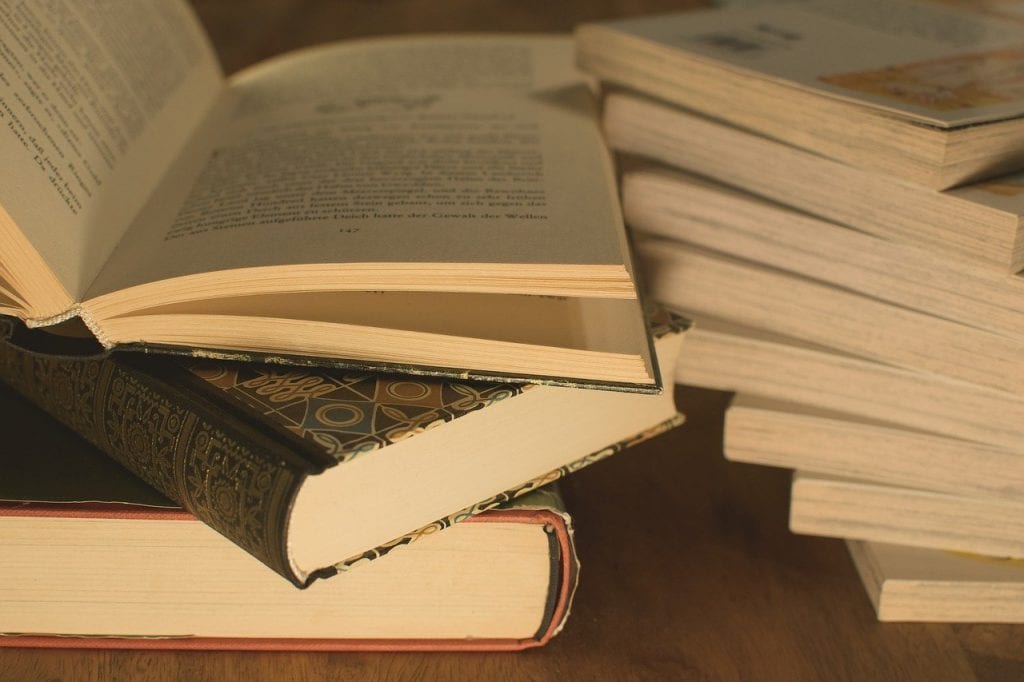
Why do you need to memorize the textbook verbatim? Are you certain you need to memorize the whole thing – or even long passages – verbatim? What will memorizing the whole textbook become y'all?
If it's just speed that you're after, think again about how to study fast with this guide to high book learning at speed.
There are certainly ways to memorize long passages of text give-and-take-for-give-and-take that are 100% constructive. There are people who are known to take done information technology.
But, if you don't absolutely accept to put in the time and effort to memorize verbatim, why would you?
Instead, what if you could learn something deeply enough to be able to hash out it, to connect information technology, and to frame it in a certain context?
Chances are, memorizing in this mode will not only be easier, but also more effective. Memorizing verbatim is rarely necessary and the mind will fill in the blanks if you construction your approach correctly.
And so in this postal service, what I really desire to teach you is the ability of memorizing select cloth from a textbook.
Your first step, as with any task that's worth doing, is to lay a stiff foundation.
Set Yourself Upwardly For Success
Now, let's be honest for a infinitesimal. If your exams are coming up tomorrow or the next day, this approach probably isn't going to work for you.
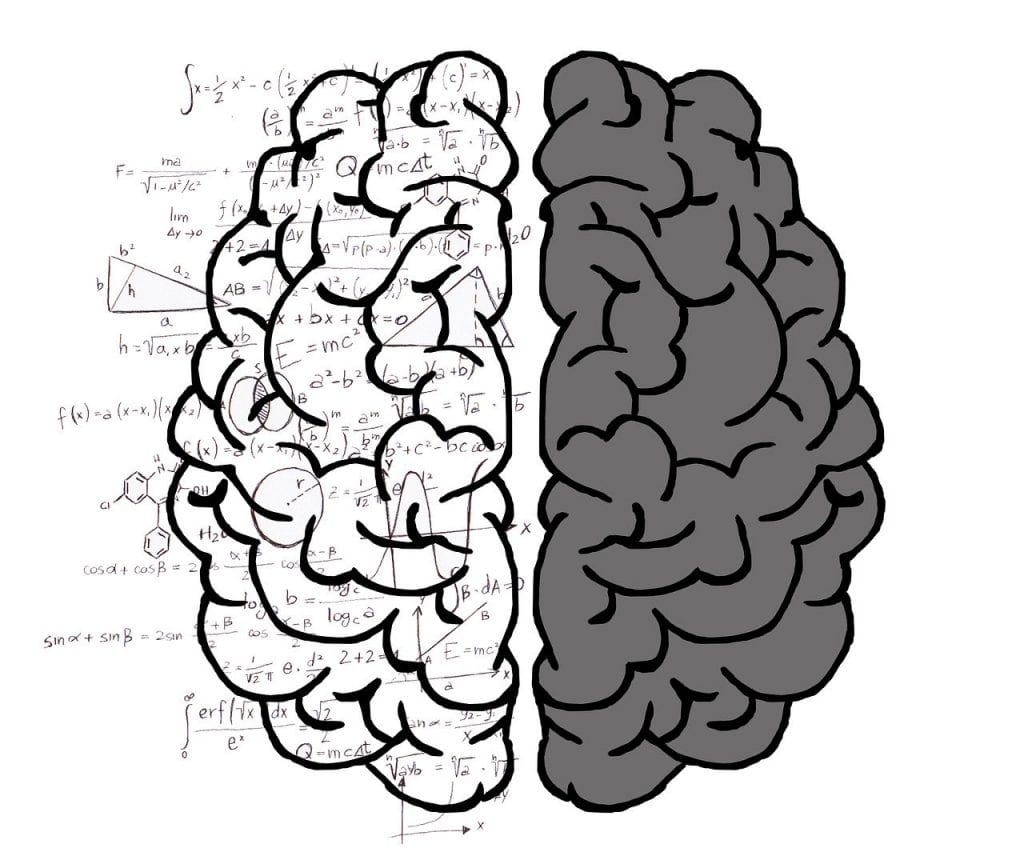
In an platonic situation, you would take the time to dig your wells earlier you're thirsty. What that means in this context is that yous desire to know what Memory Palaces are, and take yours prepare and comfortable earlier you outset to report for your exams.
You could build a ladder to the moon with all the different memorization techniques out there, but I teach a very detail arroyo called the Magnetic Memory Method. You may have heard of information technology, especially if yous're a regular reader.
And because I teach this specific approach, I would recommend that you become yourself ready earlier crunch time — earlier exams are staring you lot down, making your palms sweaty and giving you lot nightmares!
My approach uses location-based memorization strategies, all based around Retention Palaces. You'll need more than than one Memory Palace, and y'all'll need to do some cocky-exploration. But the good news is… it's super simple to practice, and the process is a lot of fun!
The commencement step in the process is to accept a advisedly defined Memory Palace.
Before you always option up a volume, even if it's scriptural, you lot'll determine how much material yous want to memorize from it. And then you'll create a Memory Palace in advance so yous can recall that data with ease when you demand it.
Merely what if you lot're new here, and you've never created a Memory Palace before? I've got you lot covered — take hold of my gratuitous 4-video retentivity grade below, and the serial will get you up to speed.
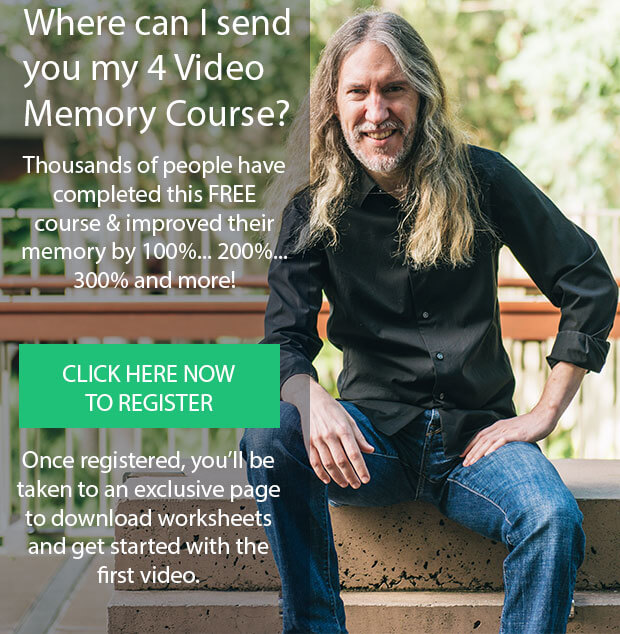
We'll talk more nearly how to use your Memory Palaces later in this postal service.
Second, you will make it the correct mindset for studying.
Setting a good mental attitude is key, before you fifty-fifty pick up the book. This allows you to mentally accept away the most essential information.
And part of getting into the proper mindset has to exercise with relaxation. Before diving into any retention technique, I always take a moment to chill out and relax. Chillax , if y'all adopt. I do this by using traditional meditation techniques.
Now, some people have a very specific vision of meditation and what it means, but for our purposes, it doesn't have to be complicated.
Meditation, in my listen, is as unproblematic equally sitting with your dorsum and cervix straight, imagining there's a hook in the top of your head attached to a string that's pulling you lot direct up. Then, you just sit down there and exhale.
Some people believe that meditation is almost emptying your listen — here are ii of my favorite metaphors:
- You're sitting on the bank of a river. Your thoughts are the river, and you simply watch them go past. So, any fourth dimension you find yourself being sucked abroad by the river you just bring yourself dorsum to the shore and watch the river over again.
- Imagine an elephant that'due south tied to a chain on the basis. The elephant – your mind – is romping around like crazy. You tie information technology to the ground with a stake, and then a couple of seconds after, you lot have to become become it and tie it down once more. And with enough training, you can get the elephant to sit and go to sleep.
That 2nd metaphor – the mind every bit an elephant – is a bit more appropriate for memory techniques.
Alan Watts said that meditation should take no goal whatsoever — information technology should be sitting merely to sit down. And in this Tim Ferriss podcast , Sam Harris says, "all you're doing is paying exquisitely shut and non-judgmental attending to whatsoever you're experiencing."
So fifty-fifty if you can't go your metaphorical elephant to cease running off, however have a moment to sit down and breathe. Take the time to chillax before you first memorizing.
This allows you lot to approach memorization with the correct attitude: still, gentle, not fighting for or clamoring after anything. You're merely being… and absorbing information. Yous might even think about it like this: you lot are a being, and the information is likewise like a existence. You go to absorb that other beingness into you, something you can bring into yourself!
And if meditation isn't your matter, you can as well exercise some progressive muscle relaxation exercises or pendulum breathing — this combines physical processes with a particular way of breathing. Or possibly you lot can mind to some music to get y'all set up to written report .
Now that you're relaxed and ready to go a metaphorical noesis sponge, let'southward break down the memorization process footstep by step.
How to Memorize a Textbook (Realistically)
When I was studying for my doctoral exams – and subsequently for my dissertation defence force – I needed to read a total of 500 books to be able to sit for the exams and write my dissertation.
500 books. No exaggeration and I'm not kidding.
(In fact, if you read my postal service about how to memorize a chapter in a textbook , you'll see photographic evidence of me carrying a stack of xx or 30 of those books. I carried many, many piles like that from the library stacks to the private part I had admission to in the Robarts Library in Toronto.)

The expert news for you is that you go to acquire from my extensive studying feel — how I operate when I'yard conducting research or want to memorize the contents of a book. (Yous tin also utilise this same method to memorize a novel, if you lot're reading betwixt the lines…)
Quick annotation: looking back at the question from our intrepid reader, you'll discover that they use the word "loci". I don't utilize that discussion myself, because the Magnetic Retention Method is much more specific.
In that location are operational factors in the 10-footstep method I teach that may not seem to involve memorization. But trust me, each step is essential to the Magnetic Retention Method of textbook memorization.
Remember: before you do anything else, take a advisedly defined Memory Palace that involves a location yous're intimately familiar with. I unremarkably chart out at least 10 – but sometimes upwards to 50 – stations. Sometimes I even use an unabridged room or spots within a room.
Let's call that step zippo: create your Retentivity Palace.
A Memory Palace is a mental construct, based on a real location. Yous use different spots inside the Memory Palace to store information along a very well-synthetic journey. Those spots are called "stations" — an entire room is a macro station, and a spot within that room is a micro station (similar a bed, desk, or chair). Yous can exit associative imagery in those locations, and so you can then go dorsum along the journeying in your mental construct, decode the images, and recall the information you left there.
Now that you accept step "zero" behind you, let's dive in to the 10 steps to help you memorize a textbook.
1. Examine the book
Now nosotros go to the proficient stuff! Take your textbook, and take a good look at it:
- Await at the front cover.
- Look at the back comprehend.
- Look over the introduction.
- Read the conclusion, and
- Exist sure to scan through the index, if your book has 1.
And read the colophon page — that'south the place where they include data nigh the book'due south publication, like the place of publication, the publisher, and the publication engagement. If you didn't know what a colophon page is, look it upwards. It'due south fascinating. I also observe the table of contents of a book to be very interesting.
These parts of the volume are what Gerard Genette called the "paratext." This means the text beside the text . This pace takes about five minutes and finer trains your brain to sympathize the scope and the dimension of the volume with respect to the topic.
Not included in that 5-minute estimate is the fourth dimension it takes to read the conclusion, which could be a much longer process. Then why should you accept the extra time to read the conclusion?
Partially, so you can guess whether or not the writer's conclusion most their subject field was profound plenty to warrant reading the book in the first place! Sometimes when you read a decision, yous'll realize that the author hasn't arrived at any decision that makes information technology worth reading the process or the argument that substantiates what the writer ended.
Okay. So maybe that'southward a little judgmental. Information technology'due south certainly non a foolproof mode to decide what to read. Merely, when you lot take 500 books on your plate it'due south worth taking the time to decide whether or non the volume warrants all that reading. You simply accept and then many hours before your examination, after all.
The conclusion (and introduction) will also give you clues as to where the information is in the volume — or at least the of import information. And this location data is often included in the context of the final remarks, which can exist quite helpful.
For example, the author might say, "In chapter ane I practice this, in chapter two I talk almost this, and in chapter three I cover that."
Side by side, you'll make some foundational decisions.
2. Brand an equation
When I take a look at a textbook, I decide in advance how many pieces of data I desire to retain from information technology.
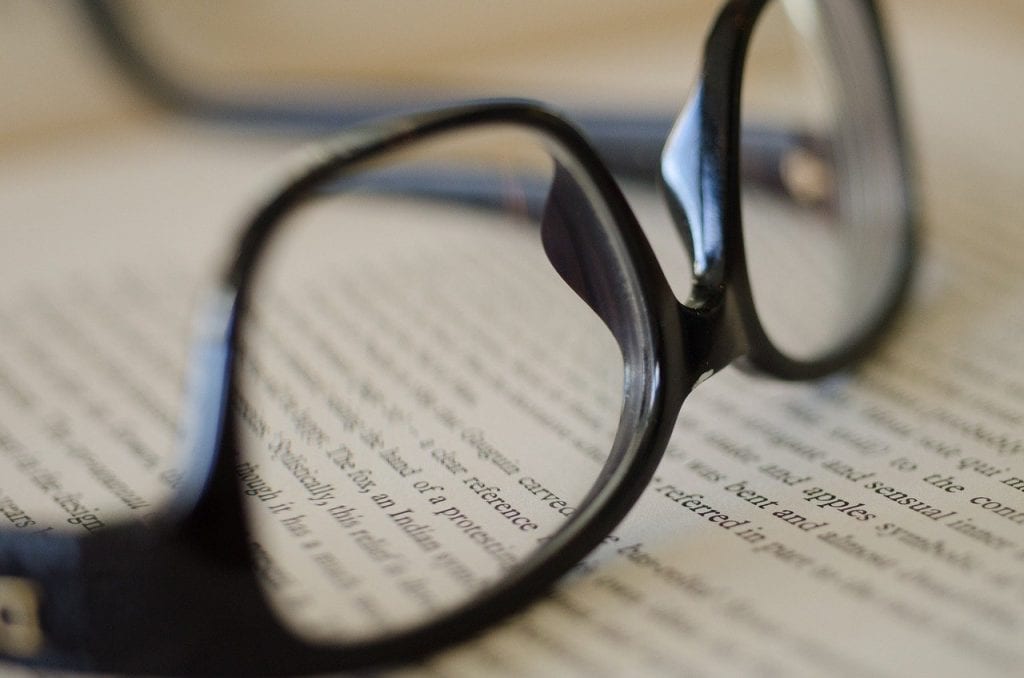
This is what the Magnetic Memory Method calls the "principle of predetermination." It'due south not an capricious or random conclusion. Instead, you volition consider the length of the book and the purpose of your studying. Is this for an oral exam or an essay?
Using this method creates an understanding of what your goal is, and what the outcome would exist. It creates a border or frame of sorts, to keep you focused.
Usually, 3 to v pieces of information per chapter is enough. And for today's post, nosotros'll utilise 3 pieces of information per chapter every bit our number.
Before we motion along to the next step, permit's examine two reasons why choosing a specific number is of import.
- Failing to plan is planning to fail.
It might sound a bit cliche, simply information technology'south true — specially when it comes to structured reading. When y'all're reading for a detail purpose, then it'southward vital to plan how yous're going to read. Books are filled with details, pages full of information, and you can hands become overwhelmed if you don't program appropriately.
- You tin avoid getting overwhelmed
When y'all predetermine how to approach a book and structure your reading process, you prevent overwhelm. You stop up denying it from existing in the kickoff identify, because y'all know you are only going to memorize three pieces of data from each affiliate.
Of course, y'all tin can always add information later if necessary, but containing and maintaining the information earlier you fifty-fifty get to it is a adept strategy.
Plus, less is always more. Focusing on just a few cardinal points volition allow a lot of the surrounding information to stick to your specifically memorized points. Go ahead and try it!
Next, you'll accept out a stack of index cards and outset organizing.
3. Get index cards
For regular readers here at Magnetic Memory Method, you might want to sit down down for what I'm about to say.
I know that I'm usually scowling and calling for the expiry of index cards… only in this case, they have a different value, other than rote learning. (As you may or may not know yet, rote learning is a no-no in the Magnetic Memory Method.)
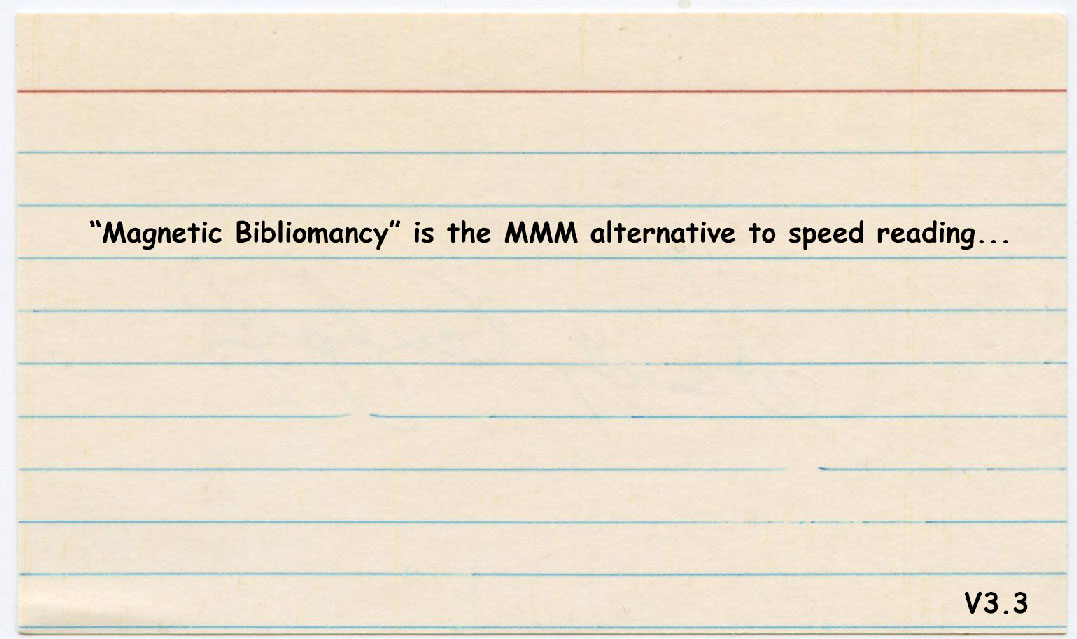
Still! When we're talking about how to memorize a textbook, we practice accept a sure mania for index cards. In fact, it's part of what I call "Magnetic Bibliomancy."
To join in the fun, grab an alphabetize card and let's get started.
Beginning, write downward the proper name of the author, the title of the book, and the bibliographic information.
Please notation: there is sure bibliographical (or paratextual) data that doesn't need to take up space in your Retentiveness Palace. And if you regularly use memory techniques, you'll find yourself absorbing that data anyway. Just I don't tend to offer Memory Palace infinite to it, since alphabetize cards are something you lot tin can hold onto.
Now you'll accept one index carte that has all the bibliographic information of the book. Number this card in the top left corner — number 1. (I e'er label my index cards in the top left corner.)
Next, you'll begin to fill out your other alphabetize cards.
>>> Yours Free: A Private Course With Cheat Sheets For Becoming A Memory Main, Starting From Scratch.
four. Find the big points and jot them down
Now that you're all organized and take your program, it's time to become downwards to business concern.
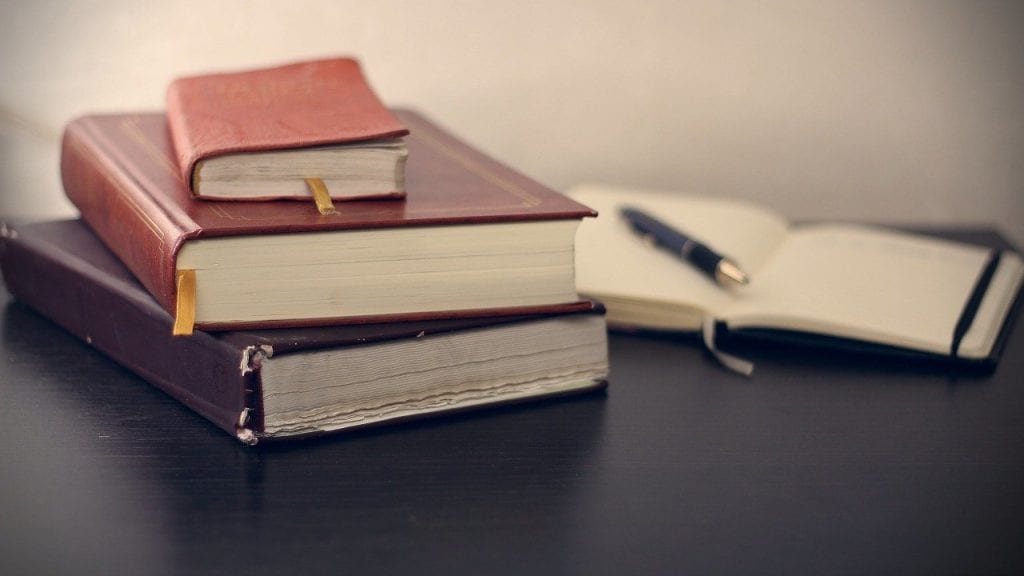
Because you read the introduction, paratextual materials, and the conclusion, you should already take an thought which chapters you lot want to read outset. Yous don't have to start with the first chapter! There's a high likelihood that your heed already decided how to prioritize your reading efforts.
Remember, for the purposes of this weblog post, we're looking for three primary pieces of information out of each chapter. So, at that place are 3 pieces of information you're going to walk away with from whichever chapter y'all read first.
You have your alphabetize cards ready to go, and you're ready to outset writing down the key pieces of data on each bill of fare, numbering them the aforementioned mode (in the top left corner).
You will want to have some sort of indication on each card most where you are in the book. This has to do with what I call the "ownership mindset" for textbook memorization. You've already adopted the mental attitude that you're going to succeed. Yous literally want to experience like you ain the key information in your textbook.
One way y'all can take on this mindset is to pretend y'all're a talk bear witness host on a popular prove or podcast, and later tonight you get to interview the author of the textbook. Millions of people will exist watching or listening, so y'all really demand to know your stuff. And you need to be able to read the book fast.
When you use this mindset, it allows you lot to ask questions while yous're reading. You get really curious about the topic, and instead of passively reading you cease upward engaging with the text. There'south force per unit area: fourth dimension pressure, the fact that yous're going to interview the author. You could even imagine that the writer is sitting there with you every bit yous read, and pretend like you can read their mind most the answers to your questions.
Studying is a numbers game. I've touched on this, but I want yous to categorize everything using a kind of numbers game. So when yous come beyond a precious stone of a particular, write it down on your alphabetize card along with the page number where you found the information, and sometimes the chapter name or number.
This kind of information always goes in the bottom right corner. And if you have secondary ideas, you can use the back of the alphabetize card to jot them downwards. I ever do this regardless of whether I've copied downwards a quote from a book or just a note or ascertainment.
Hither'southward why I diligently complete this stride: if I always demand the information again, I'll know where to detect it.
At this point, you're non doing any kind of memorizing whatsoever. Instead, y'all're:
- Familiarizing yourself with the textile,
- Connecting details with already-known information,
- Learning new data, and
- Gathering new facts and details.
That'south it — but memorization is not ready yet. You aren't memorizing the book as you keep, only rather focusing on the book and marinating yourself in it.
Side by side, you'll take the information from your index cards and transfer it into your Memory Palace.
5. Make use of your Memory Palace
Once you've finished reading the book and filling out your index cards, information technology's time to place the information into the right spot in your Memory Palace.
Let'south pretend for a moment that our example textbook had x chapters. Since we wrote downward three pieces of data per affiliate, nosotros now have thirty index cards. And because we prepared our Memory Palace ahead of time, nosotros have 30 stations fix to go.
Now information technology'due south fourth dimension to memorize, magnetically .
In the adjacent step, you lot'll make your data visually highly-seasoned.
6. Create crazy imagery to help you recall the info
Take each index card and think of an image that relates to the information on your card. Brand the images brilliant, zany, and exploding with action.

I'll walk you through a few examples so you tin come across this step in action.
Example one: Imagery based on the writer's advent
Let's take Gerard Genette, the author of Paratext , as an instance. If I wanted to memorize textile from the book Paratext , I would use Gerard equally a lexical bridge or Magnetic Bridging Figure, helping me move from station to station.
Genette reminds me of Gillette razor blades. Non exactly a ane-to-i correlation, but I tin withal see him shaving in that first room, if I needed to memorize that he was the author of Paratext . He would be shaving abroad a bristles with wild ends growing out of his face. For the context of "Paratext" I could picture a pear bouncing up and down on a textbook, or a can or Para Pigment splashing over a volume.
Example 2: Imagery based on concepts from the index carte
In this case, index card two says, "A text does not be outside of the text itself."
It may sound pretty obvious, only we don't often think virtually the fact that until someone comes along and reads the book, it essentially doesn't exercise anything. In that location are millions of books standing unread on bookshelves around the world that only exist when someone is reading them or talking about them.
Then our minds are kind of texts, and when nosotros read, the two texts intermingle. The second station will feature the volume Paratext itself, and words are trying to escape from the pages. And poor Genette is standing there, trying to beat the words dorsum in — because co-ordinate to him there is no text exterior the text itself.
Instance three: Imagery of the author throughout the Memory Palace
To get some of the other concepts in Genette's thinking, I might see him giving up the battle and and so opening up a lid in his head, which is besides filled with words. I could use Genette for each and every station, doing something related to the primal phrase on the index carte.
I've done this with Aristotle'south Nichomachean Ethics . I've done information technology with Plato's The Commonwealth . I've done it with novels. Done it with all kinds of things. In one case you get used to information technology, it's very easy.
And when using this approach for Ulysses past James Joyce it's very piece of cake to see Joyce moving through my Memory Palace, non through Dublin, as he does in the novel.
If I knew Dublin, then I might be able to use Dublin, merely I don't. So I was able to use a Retention Palace based on a familiar location and I see Joyce going from place to place and so I can recollect the unlike things that are happening in the plot in lodge to recollect them later.
At present yous've seen three unlike examples of how you might utilise wildly exaggerated information to help you populate your Memory Palace stations. Remember, these images should always be large, bright, colorful, and filled with lots of activeness.
Next, you'll assign each crazy prototype to its ain station.
vii. Stick each crazy image onto a Retentivity Palace station for recollect
This pace is the most straightforward of the ten.
You will begin with card number 1, and memorize the biographical information at station number 1 in the Memory Palace. Then continue on with alphabetize carte two and station two, index card three and station three… you lot get the thought.
If you already know the author and title by heart, you lot might non need to apply that first station for biographical information. Employ your judgment, so yous don't waste valuable memory real estate.
Since information technology but takes a 2nd or two to create a really action-packed paradigm for each station, be sure to take the fourth dimension to actually see them in your mind's eye.
Next, yous'll exam your recall.
8. Exam yourself earlier the teacher does
This is the step many people won't take: practice recalling the info past going from station to station.

After you've gone through and used your Retention Palace to put every bit of information on those 30 cards into the proper station, you can brand certain the information sticks. Pretend like y'all're testing yourself in a existent test state of affairs.
Have the details, facts, concepts, and plot points that you memorized, and write a summary from retention. Your index cards should be somewhere else during this exercise — in a box, on a shelf, or somewhere else y'all can't cheat. And you can't look back and forth the whole time to make sure you get things right every bit yous keep.
So, cheque your summary confronting the index cards. Did you remember all the points from your cards? Did y'all recall things in the correct order?
Finally, it's time to let the data abound into something bigger.
ix. Let the info abound into knowledge
One of the most of import stages of this procedure is to turn the information you memorized into knowledge that you can employ over and over — not only for this single test or exam.
This is one identify where the related information that wasn't on your index cards will come out to shine, likewise. You get to come across which pieces of information are "magnetic" and stick to your brain. And you tin can start to apply the things you learned in other situations, possibly fifty-fifty bringing some of the information into everyday conversations.
Plus, once you make the switch from data and data points into cognition, you're much more than probable to pass every exam with flight colors!
And speaking of transforming information into knowledge, you can also pull that cognition out of your brain banks downward the line. Allow's accept a look at the tenth and final (bonus) step in your memorization process.
ten. Bonus! Save your noesis for afterward
When you're done with your alphabetize cards, don't throw them away!
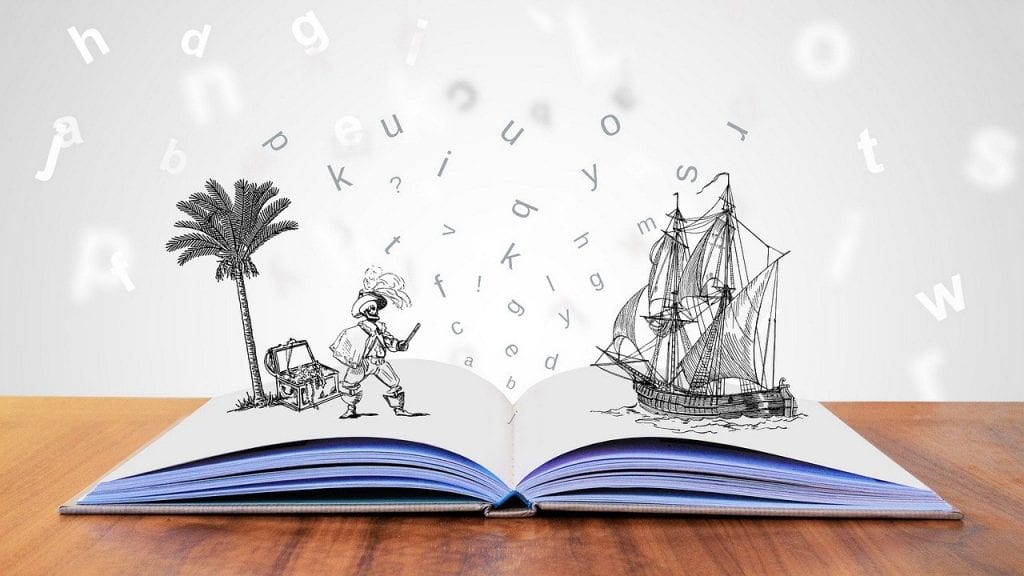
One time y'all don't need the data for your examination anymore, you also don't demand to agree the data in your Memory Palace. You lot tin can empty out and reuse your Retentiveness Palace for something else, and let the index cards agree the information for a rainy day.
For instance, permit's say you memorized the James Joyce novel Ulysses for a literature class. Once you took your exam, you didn't need the information rattling effectually in your brain, then you put the alphabetize cards in a box and shelved them abroad for later.
Five years subsequently, you're asked to give a talk about the novel. You can simply find the box with your index cards, reconstruct your Memory Palace, and salvage fourth dimension in putting together and memorizing your talk.
There's a high likelihood some of the information will even so be in your brain, tucked away in a corner somewhere. And peradventure it's in that location in the form of paleness, or there are some ghosts or fossils of other information you've stored in the Memory Palace since then. Only annihilation that'south however in your memory will get doubly magnetic later on working with it again.
One of my academy supervisors required me to submit summaries to prove I was reading the books on my reading listing. This is what got me into the addiction of writing out summaries, and I learned very quickly that writing summaries out of Memory Palaces was but golden. This is material that – if you use it – volition change your ability to study and your understanding of how to take notes from a textbook .
Yous can as well use your summaries again later. Relieve them, and you might find a way to use them for essays, pieces of a publication, or even a Ph.D. dissertation. Past using your call up abilities, you lot're becoming an expert on your subject thing.
Y'all put stuff in your mind, filter it, and then reproduce it — all without the benefit of looking dorsum and along at your textbooks or index cards. And through the process, you become a chief of information .
Now, I know I said y'all may not need to memorize your textbooks verbatim, but what near the situations where you lot do actually demand to remember things discussion-for-word? Before we wrap up, let's accept a wait at a couple of examples of how to do just that.
Example: How to Memorize Verbatim
We'll use the showtime line of Homer's epic poem The Iliad for this example.
Now imagine this — I used to work (more similar play) at Hadey Windey'due south school in Burnaby, Vancouver. It was called ELIT or English Linguistic communication Intensive Preparation.
She's got a vibrant, brilliant set of students who come up to this afterward-school program for extra training so they tin be superstar students, and I was able to develop a lot of didactics around retentivity skills for them. I as well taught the students other things similar interpretative abilities and essay writing skills, all of which are continued to memory.
And I also was able to build, from this place, an astonishing Retentiveness Palace. I never really thought of using it as a Memory Palace until I was training Hadey in using mnemonic techniques and Memory Palaces, and she really didn't believe it was possible.
I just happened to have an old translation of The Iliad in my iPhone as nosotros were sitting in a park. And I was explaining Memory Palaces to her, and drawing a map of ELIT, showing her how she could use a Memory Palace based on the school.
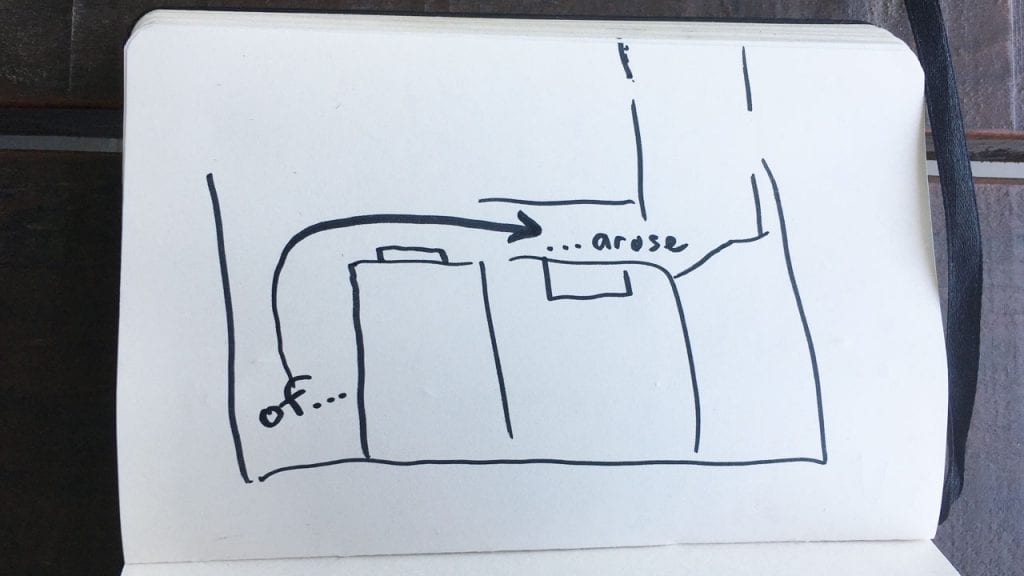
I said, "Here'southward the kitchen, and the office that I accept, and here is classroom number 3, and the computer room," and other things, and I showed how you could brand a linear mental journey through this area. Starting in the kitchen, I said, "Imagine I'grand limping, and I kick a pail from the kitchen to the door where the Statue of Freedom is standing. In response, she digs with her shovel into the ground and throws the dirt at my part door where I'm standing, writing numbers, and then rubbing the numbers away while I'm coughing."
Well, the first matter I want to point out is that all of these images are laid out along a journey. It starts in the kitchen and and so goes to the door of the kitchen. So an action goes through the hallway to the door of my function. And other parts acquit on through classroom number three and the reckoner lab and then forth. But I'thousand limping, which reminds me of Achilles, because of Achilles' heel. I kick a pail. Moving on to the pail, Achilles' begetter is Peleus. Now, I don't demand to have the whole Peleus, only pail is enough to remind me of Peleus.
So, "Of Peleus' son, Achilles," the pail is now kicked at the Statue of Liberty. "Sing, O Muse." Now that's personal to me. The Statue of Liberty means muse to me. It'southward just because it's a woman in a gown, I estimate — it works for me.
The hardest thing to teach almost Memory Palaces and associative imagery is that you need to utilize what works for yous. You demand to draw from your own personal pool of images based on other things that you know. You're creating associations. So information technology might not brand sense to you, but, to me, it makes a bang-up deal of sense.
"Of Peleus' son, Achilles, sing, O Muse." Me, limping, kicking a pail at the Statue of Freedom, that brings back "Of Peleus' son, Achilles, sing, O Muse. The vengeance, deep and deadly" which is the side by side line — so the Statue of Liberty is really angry about this, but instead of attacking back at me, she digs into the earth with vengeance — "The vengeance, deep and deadly; whence to Greece unnumbered ills arose."
So she's throwing this clay at my office door, and I didn't really need to remember about the fact that it was taking place in Greece. Any time that you lot don't need to memorize something, don't worry about putting it in the verbatim, because verbatim is a weird matter. Basically, if you lot don't need information technology and it comes back naturally, don't create an image for it.
So, "Whence to Greece unnumbered ills arose," well, what am I doing as this dirt comes at me? I'm writing numbers, and so I'yard wiping them away. Unnumbered. And I'm cough, I'm sick — ills. "Whence to Greece unnumbered ills arose."
That'southward a very simple instance. I created a vignette since it's non really a single image or a gear up of images. And I did this on and on and on for as much of The Iliad equally I wanted to memorize to create this instance for Hadey. And she was blown away.
After that, she came back two days later and had memorized 100 words of English vocabulary. (English language is not her showtime language.) She was really skeptical at beginning, merely that's how I finally convinced her to give this a try. At present she's part of Toastmasters, and she's giving speeches left, right, and center, right from her mind, straight from using the Magnetic Memory Method.
Now, it's important to remember that this example was how to memorize a poem verbatim, and you lot may not demand to memorize your entire textbook discussion-for-discussion.
And in additional skilful news, yous can apply this method for anything you lot want to remember — information technology doesn't thing whether it's a formula, poetry, a quote, phrase in a foreign language, or a textbook.
Memorization is memorization, when y'all get right down to it.
The reality is that you lot tin take a spoon or a bucket — the ocean of information doesn't care. The memory techniques and your encephalon care for all information equally well. It's simply the ego that sees a deviation, and lack of preparation with the memory tools makes information technology more difficult.
And finally, since our intrepid reader asked specifically nearly how to memorize a formula, I'm adding a bonus example to help anyone who needs to memorize them.
>>> Yours Free: A Private Course With Cheat Sheets For Becoming A Memory Master, Starting From Scratch.
Bonus Example: How to Memorize a Formula
Permit'south also interruption down an example of how verbatim memorization works when you lot demand to retrieve a formula. We'll use the example our reader asked about:
sin(A+B)=AcosB+cos
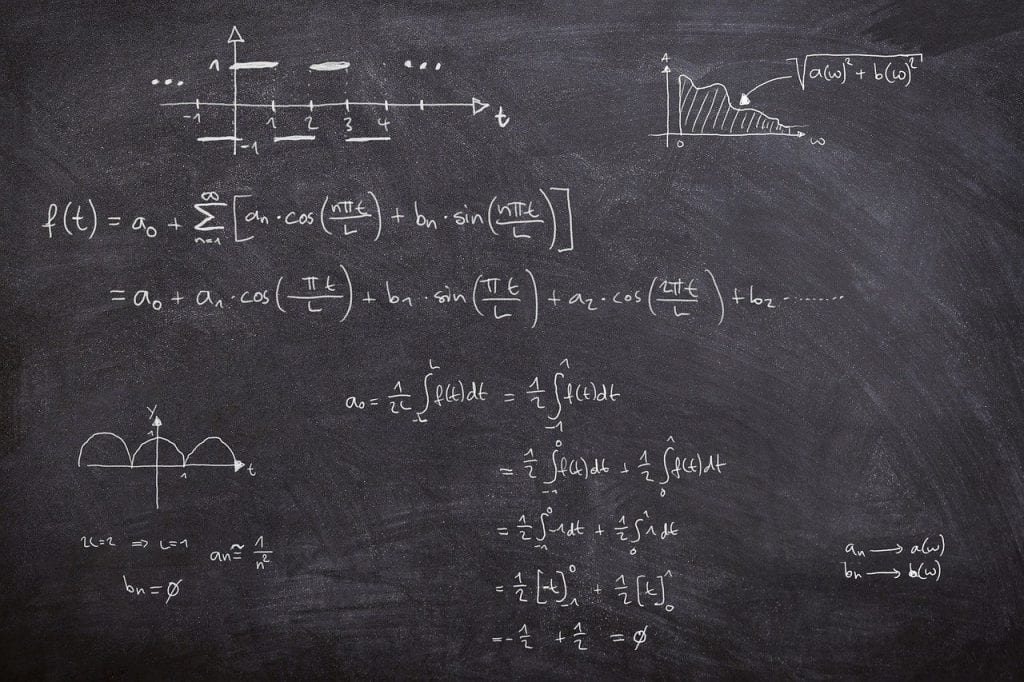
As always, we want to offset with a well-formed Retentivity Palace first.
I think of my friend Shannon because her proper name starts with 'S'. I was simply in her apartment once to watch a James Bond picture show, simply that's all I need to get a skilful Memory Palace rolling.
Next, I beginning creating Magnetic Imagery to encode the first function of the formula. Since the devil is the dominate of "sin," I put him on Shannon's couch (a micro-station). To memorize the character "(" I make it a bulldozer. It drives over an Apple computer, which draws upon some other technique entirely, called the pegword method .
From this A for Apple figurer, an arm emerges and tosses a crucifix at Batman. Why? Considering a crucifix is a skilful memory tool for remember, and Batman helps me call up "b."
At present all I have to exercise is have Batman raise his shield — thus closing this part of the formula with the ")" symbol. But this shield is special because it has two guns to represent the = sign. So Al Pacino "accosts" Batman throwing a crucifix at Cookie monster wearing Batman "cosplay."
I know that this process might sound like a lot if yous're a beginner, but y'all'll option information technology upward quickly. And you should — it's powerful!
So there you have information technology. Your ten-pace cheat sheet for how to memorize a textbook or formula… or any other book y'all want to recollect.
How to Study a Textbook for Maximum Memory
Think that scenario at the kickoff of the mail service? The one where exams were on the horizon, and y'all were feeling woefully unprepared?
Now y'all know how to determine how much reading you actually need to do, how much memorization is on your plate, and the best way to memorize your textbooks and so yous retain as much information as possible.
About chiefly, you sympathise that memorizing a textbook isn't equally hard as it might seem!
You're on the right track to ace your exams and create a whole new set of cognition that you can use now and into the future.
And if you feel like you could use a trivial flake more than of a memory heave before your exams, check out my free memory improvement kit.
Supplementary Viewing
Source: https://www.magneticmemorymethod.com/how-to-memorize-a-textbook/
Posted by: beckempting2000.blogspot.com


0 Response to "How To Find Solution Manuals For Textbooks"
Post a Comment